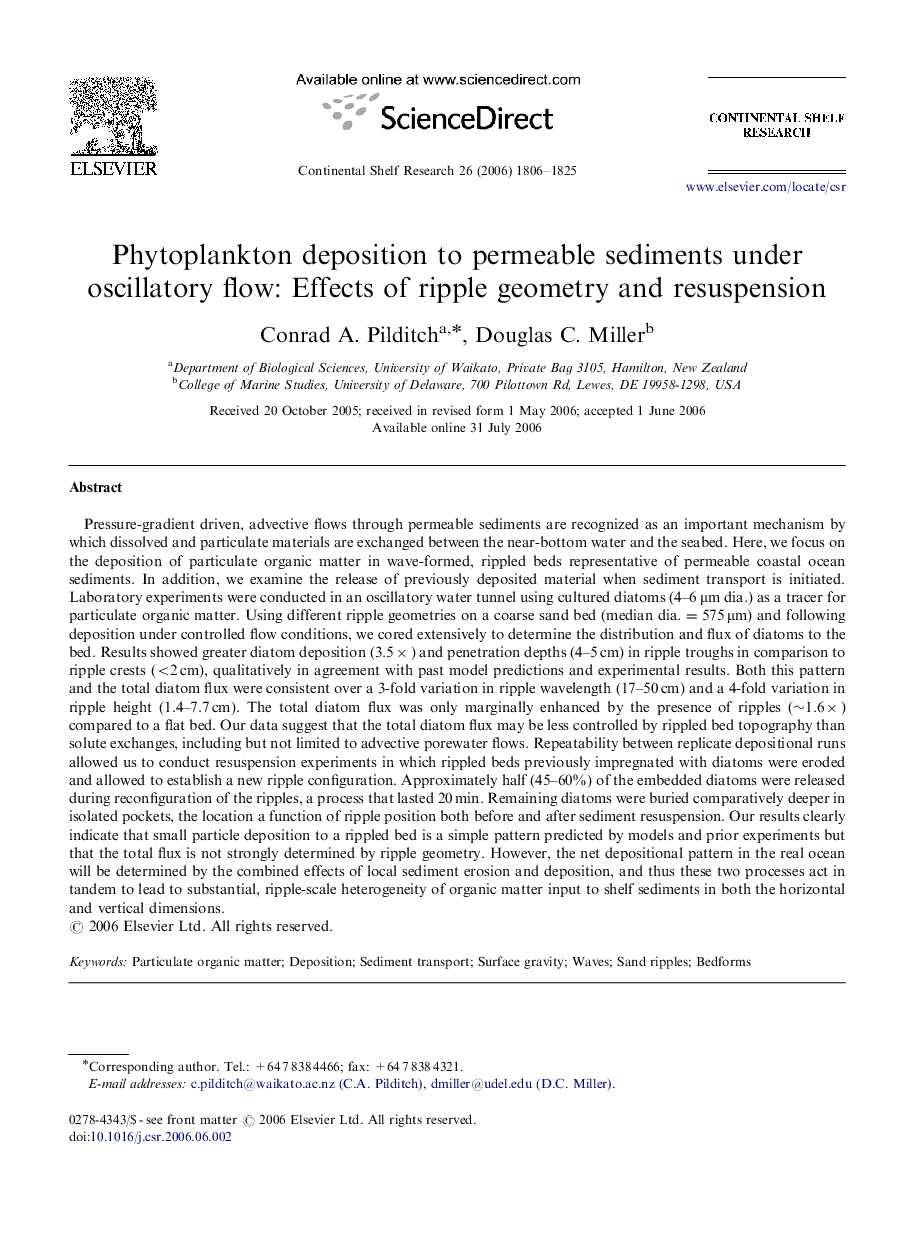| Article ID | Journal | Published Year | Pages | File Type |
|---|---|---|---|---|
| 4534012 | Continental Shelf Research | 2006 | 20 Pages |
Abstract
Pressure-gradient driven, advective flows through permeable sediments are recognized as an important mechanism by which dissolved and particulate materials are exchanged between the near-bottom water and the seabed. Here, we focus on the deposition of particulate organic matter in wave-formed, rippled beds representative of permeable coastal ocean sediments. In addition, we examine the release of previously deposited material when sediment transport is initiated. Laboratory experiments were conducted in an oscillatory water tunnel using cultured diatoms (4-6 μm dia.) as a tracer for particulate organic matter. Using different ripple geometries on a coarse sand bed (median dia.=575 μm) and following deposition under controlled flow conditions, we cored extensively to determine the distribution and flux of diatoms to the bed. Results showed greater diatom deposition (3.5Ã) and penetration depths (4-5 cm) in ripple troughs in comparison to ripple crests (<2 cm), qualitatively in agreement with past model predictions and experimental results. Both this pattern and the total diatom flux were consistent over a 3-fold variation in ripple wavelength (17-50 cm) and a 4-fold variation in ripple height (1.4-7.7 cm). The total diatom flux was only marginally enhanced by the presence of ripples (â¼1.6Ã) compared to a flat bed. Our data suggest that the total diatom flux may be less controlled by rippled bed topography than solute exchanges, including but not limited to advective porewater flows. Repeatability between replicate depositional runs allowed us to conduct resuspension experiments in which rippled beds previously impregnated with diatoms were eroded and allowed to establish a new ripple configuration. Approximately half (45-60%) of the embedded diatoms were released during reconfiguration of the ripples, a process that lasted 20 min. Remaining diatoms were buried comparatively deeper in isolated pockets, the location a function of ripple position both before and after sediment resuspension. Our results clearly indicate that small particle deposition to a rippled bed is a simple pattern predicted by models and prior experiments but that the total flux is not strongly determined by ripple geometry. However, the net depositional pattern in the real ocean will be determined by the combined effects of local sediment erosion and deposition, and thus these two processes act in tandem to lead to substantial, ripple-scale heterogeneity of organic matter input to shelf sediments in both the horizontal and vertical dimensions.
Related Topics
Physical Sciences and Engineering
Earth and Planetary Sciences
Geology
Authors
Conrad A. Pilditch, Douglas C. Miller,
